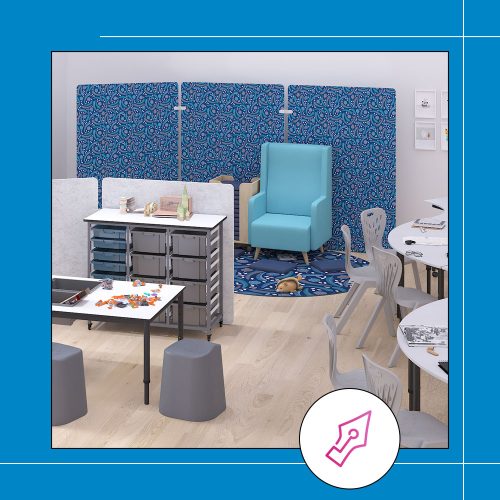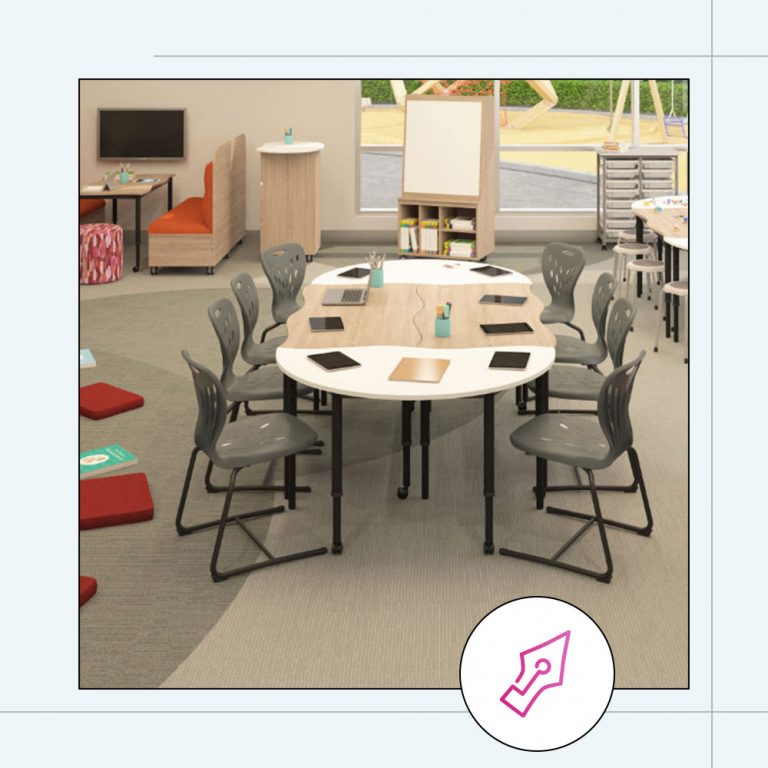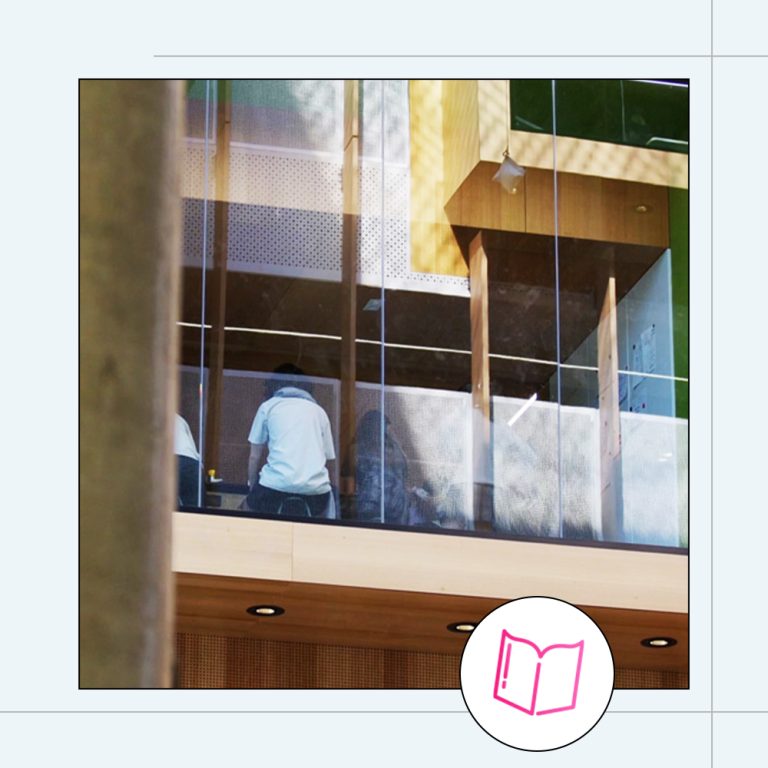The Impact of Excessive Noise on Learners
In the last decade, there has been a resurgence in many Australian schools adopting flexible open-plan learning spaces to support bigger classes and the diverse learning needs of students. Further, there has been a strong trend towards transforming traditional libraries into multi-purpose resource centres that can be used by multiple groups of students. But, with these bigger spaces and their attendant benefits, comes the risk of increased noise levels and distracted learners.
Current Australian guidelines for classrooms are indicated in A-weighted decibels (dBA) and recommend that:
- the unoccupied noise level – when a classroom is empty – should be less than 35 dBA (equal to a whisper)
- the occupied sound level – when a classroom is full – should be kept under 50 dBA
Excessive and prolonged noise can result in:
- Students experiencing increased distraction and poor concentration
- Poor learning outcomes for students who are unable to hear and understand instruction*
- Teacher frustration from being unable to hear and respond to students who need help
- Increased levels of stress and fatigue for both students and teachers who struggle to hear and be heard over noise.**
*A 2015 report by Macquarie University, which studied the impact of noise on early primary students in open plan classrooms, found that “higher noise levels significantly decrease children’s speech perception accuracy and speed of response. The children’s speech perception accuracy and speed also decreased the further away the child was seated from the loudspeaker (simulating the teacher’s voice), but only when the noise level was over the recommended 50 dBA.”
**The Oticon Foundation’s study in traditional primary school classrooms in New Zealand found that more than 33% of teachers indicated they had to speak at a level that strained their voices.
Acoustic Terminology
In order to understand how to use furniture, layout and smart materials to manage noise, we must first understand a little about acoustics.
Background Noise: this includes HVAC Noise (from vents and air-conditioning units), outdoor noise (from cars, trains, planes and playgrounds), reflected noise like echoes from uninsulated spaces, and noise from adjacent spaces like neighbouring classrooms or hallways.
Background noise is generally managed with structural interventions like insulation and windows.
Reverberation: occurs when sound waves strike surfaces like floors, walls and ceilings and are reflected back into the space. This can be the most distracting type of noise as it is often amplified during whole class activities.
Reverberation time (RT) in seconds is the time it takes for sound to decrease in a classroom – the higher the RT, the more echoey a room. The AS/NZS 2107:2000 standard recommends reverberation times in unoccupied primary classrooms be less than 0.4–0.5 seconds. For comparison, an indoor basketball court would be between 2.0 – 3.0 seconds.
Signal to Noise Ratio (SNR): The difference (in decibels) between a sound that is desired to be heard (such as the teacher’s voice) and other sounds (such as activity noise). The aim is to keep the SNR as high as possible without a teacher straining their voice.
The SNR is typically lowest at the back of the classroom, furthest away from the teacher or near a noise source like an open window or an air-conditioning unit. This is why students who sit at the back of the classroom are more prone to distraction.
Speech transmission index (STI): This is an estimate of how easy it is to hear speech sounds in a classroom on a scale of 0 (no speech sounds would be heard) to 1 (all speech sounds would be heard). The further a student is from the teacher and the more noise around them, the lower the STI.
So, how can you improve the acoustics in a learning space to ensure students are being heard?
Reducing Classroom Noise Using Soft Furnishings
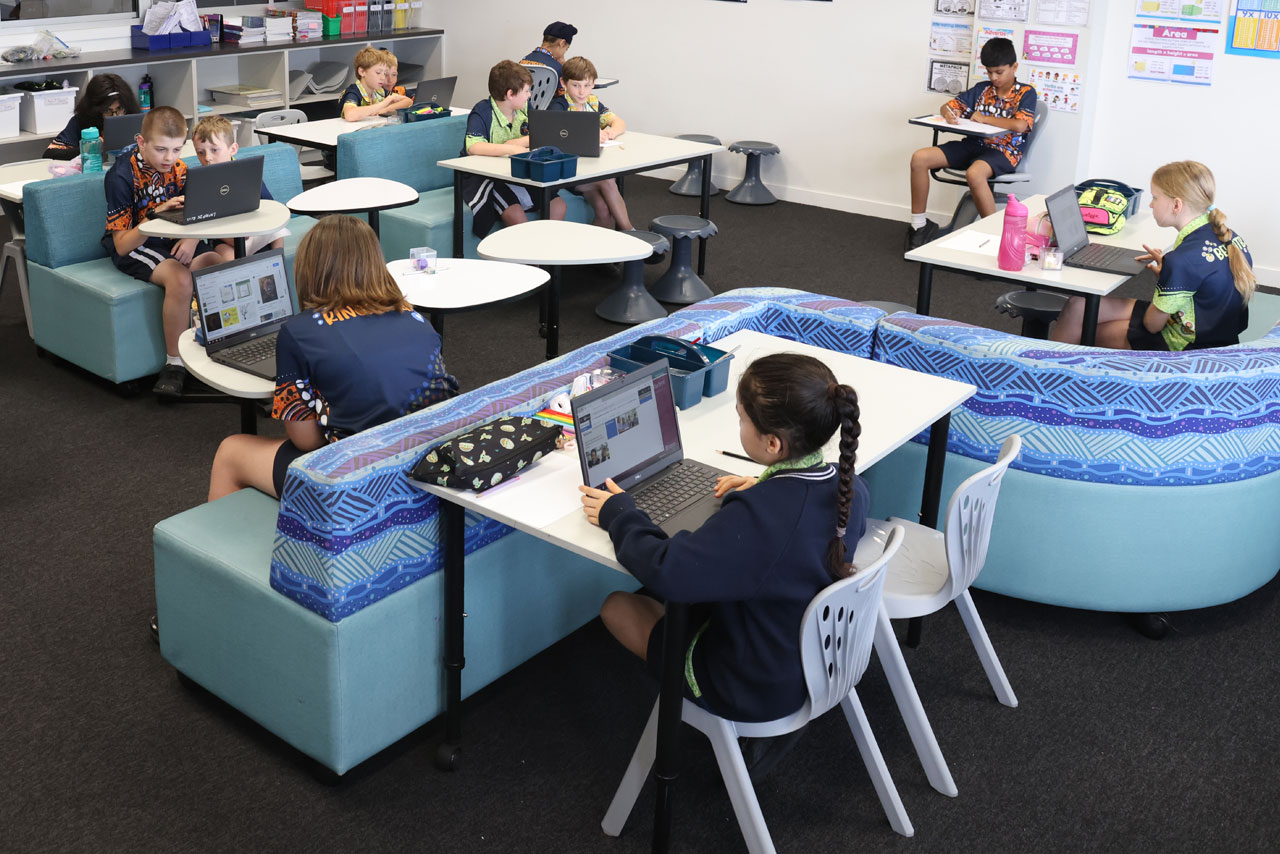
Furnishing a room isn’t just about aesthetics and practicality. The choice and arrangement of furniture and décor can have a huge impact on noise.
In addition to being comfortable, soft furnishing like lounges, ottomans, rugs, cushions and armchairs can also absorb noise in learning environments.
Floor impact noise can come from walking, chair-scraping, and the reverberations from group conversations can be distracting, so where possible, classrooms should be carpeted to minimise the amount of floor impact noise created.
To soften the impact of hard floors used in isolated areas like science, art or hospitality spaces, try to incorporate free-standing audio-absorbing dividers or panels or hang heavy curtains to improve speech transmission.
Rugs are also an inexpensive way to reduce noisy learning environments while adding a welcome pop of colour and some interest to the room.
We recommend combining lounge settings for secondary school students, or BFX’s smaller modular ottomans for primary students, with a rug for a significant improvement to noise levels.
In senior classrooms where desks face the board, teachers can consider fixing high-performance acoustic panelling on the rear wall of a classroom to reduce reverberation times. The front wall should remain a hard surface to reflect sound to the rear of the classroom so as not to interfere with the Signal to Noise Ratio (SNR).
BFX’s AudioArt panels not only effectively absorb sound but also add interest to a room and are a great way to incorporate the school’s colours into the room’s design.
Reducing Noise Transfer Using Zoning
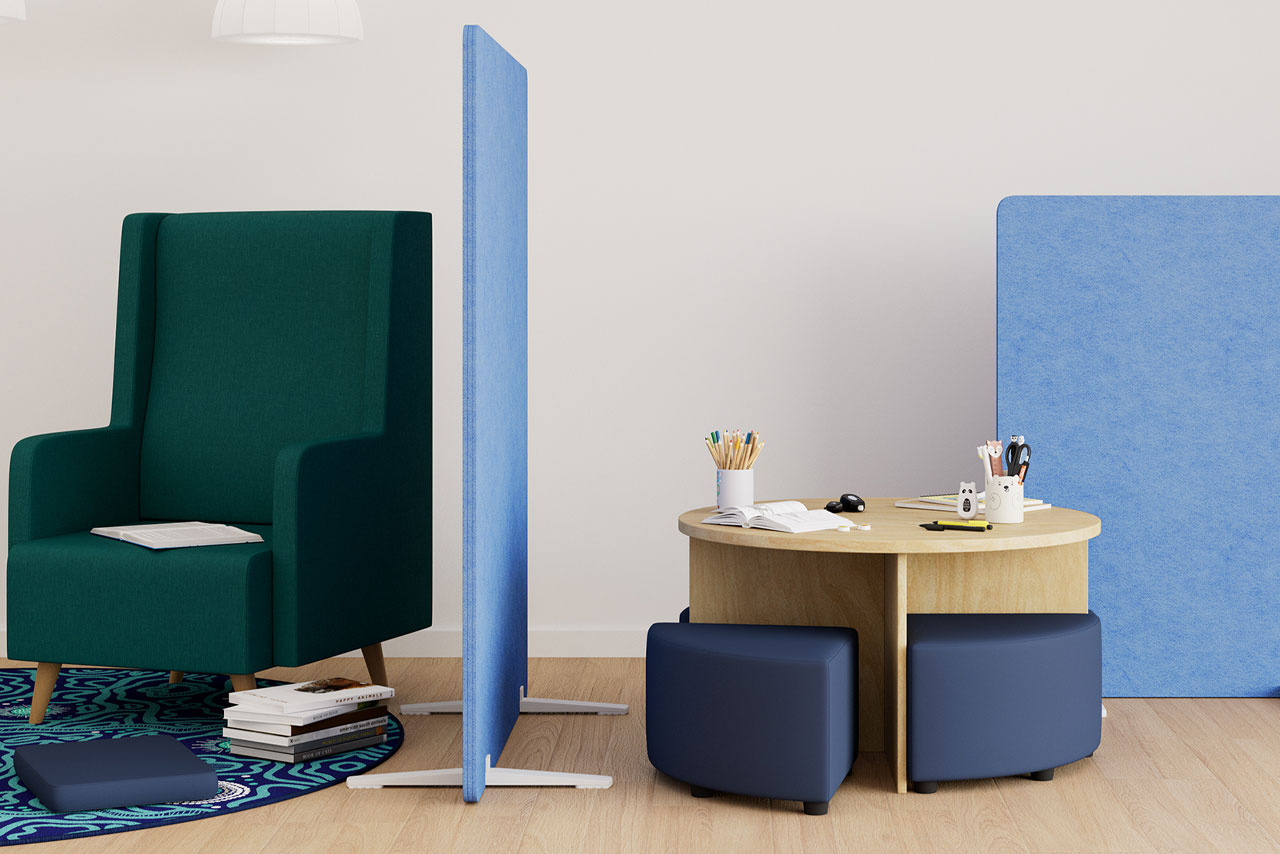
Creating zones using upholstered furniture or free-standing dividers creates spaces for quiet activities and break-out areas while mitigating noise transferring from group discussions.
BFX’s AudioArt Create-A-Space range enables schools to easily define a space, absorb sound and add a decorative touch. This product enables teachers or staff to create different configurations, from screens to pods, using brackets and stabilising feet.
Panels are available in a variety of colours and printed designs to complement your design scheme and are compatible with popular BFX products.
Adding them to large echoing spaces like halls can also assist in managing sound during exams.
Perfect for dynamic learning spaces, libraries, resource centres, and open classrooms, the Create-A-Space range enables schools to:
- Mark space: use the panels against walls to indicate a reading, silent study or collaboration area while absorbing sound from the rest of the room.
- Divide space: create distinct learning areas that assist with transitions between activities or keep groups of learners separate to reduce distraction.
- Encase space: create pods that provide a private and quiet working area.
- Activate space: add shelving, multi-purpose furniture, chairs, lounges or desks either side of the panels to make the best use of the space.
Final Words
In addition to negatively impacting learning outcomes, consistent exposure to noise can affect the mental health and well-being of students, teachers and staff, leading to hearing damage, stress, fatigue, distraction, and sleep disruption.
Small changes, like adding Audio Art dividers, acoustic wall panelling, soft furnishings and rugs, in addition to considering the placement of furniture in a room, can make a significant difference to noise levels in learning spaces, and ensure a more comfortable experience for everyone.
Talk to our team today about how BFX’s range can address noise challenges in your learning spaces.


